Overview
The article titled "10 Retail Real Estate Trends Shaping the Future of Shopping" presents pivotal trends that are reshaping the retail landscape. It underscores the significance of:
- E-commerce growth
- Sustainability initiatives
- Technology integration
- Mixed-use developments
These elements are redefining consumer experiences and influencing retailer strategies in response to evolving market dynamics. Understanding these trends is essential for investors looking to navigate the changing retail environment effectively.
Introduction
The landscape of retail real estate is undergoing a seismic shift, driven by evolving consumer behaviors and technological advancements. E-commerce continues to reshape shopping habits, compelling retailers to innovate and adapt their strategies to remain competitive. This article delves into ten pivotal trends that are defining the future of shopping, presenting unique challenges and opportunities for businesses.
How can retailers effectively navigate this complex environment and leverage these trends to thrive in a rapidly changing market?
Zero Flux: Daily Insights on Retail Real Estate Trends
Zero Flux is dedicated to delivering daily insights into the commercial real estate landscape, meticulously curating data from over 100 sources. This ensures that subscribers receive the most relevant and timely information available. By emphasizing factual reporting devoid of opinions, Zero Flux empowers real estate professionals to make informed decisions grounded in the latest market dynamics. Such a steadfast commitment to data integrity solidifies Zero Flux as an indispensable resource for comprehending the retail real estate trends in the evolving retail environment.
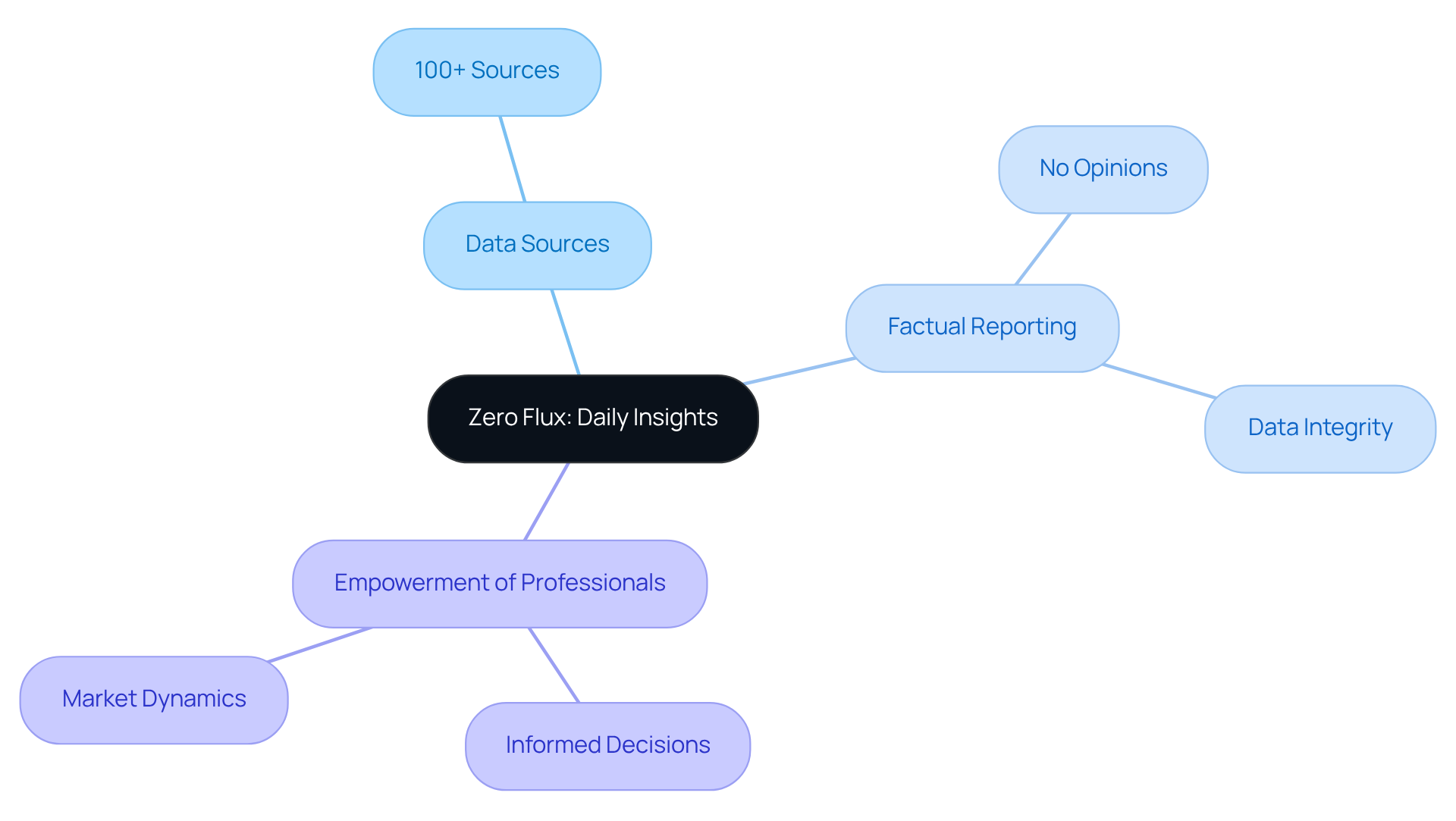
E-Commerce Growth: Transforming Retail Strategies
The explosive growth of e-commerce compels sellers to reassess their strategies. Traditional physical stores are increasingly integrating online platforms to enhance client interaction and streamline operations. By adopting omnichannel approaches, retailers empower shoppers to navigate effortlessly across multiple channels, thereby crafting a cohesive shopping experience. This strategic pivot not only amplifies sales but also fosters client loyalty through personalized interactions.
Notably, businesses that effectively implement omnichannel strategies have reported significant increases in client retention and satisfaction, underscoring the critical importance of seamless integration in today’s market landscape. As we advance through 2025, the emphasis on creating a unified customer experience will be paramount, with successful enterprises leveraging technology to meet evolving buyer expectations.
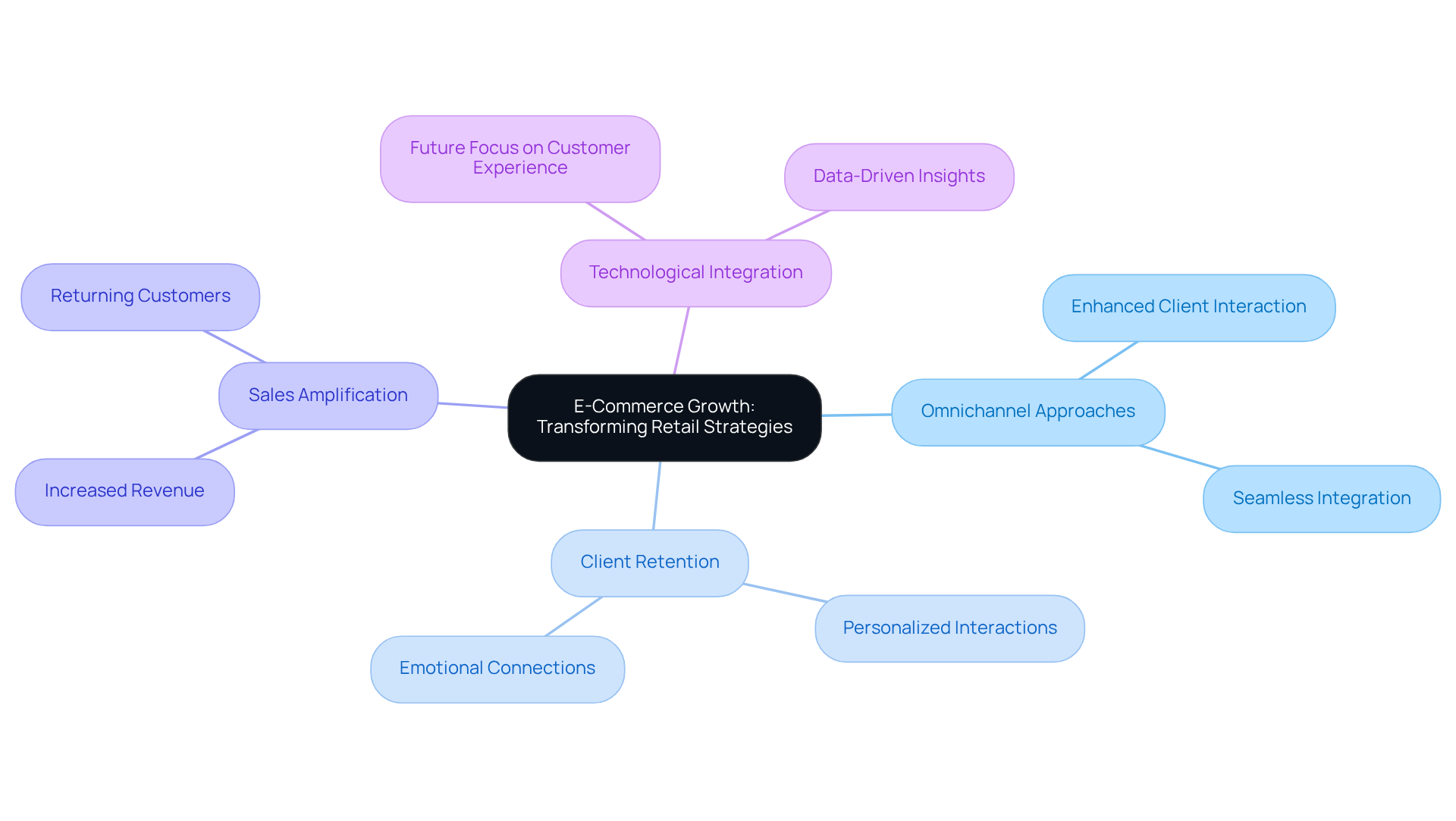
Sustainability Initiatives: Driving Eco-Friendly Retail Developments
Sustainability initiatives have become increasingly integral to retail development, as retailers adopt eco-friendly practices that encompass everything from sourcing sustainable materials to implementing energy-efficient technologies. This shift is not merely a response to regulatory pressures; it signifies a profound change in buyer behavior. By 2025, a remarkable 76% of buyers will consider sustainability in their purchasing choices, up from 55% in 2022. Retailers that prioritize sustainability are strategically positioned to attract environmentally conscious consumers, thereby enhancing brand loyalty and gaining a competitive edge in the market.
Successful case studies underscore this trend. For example, brands that have adopted clear sustainability messaging have witnessed a 28% increase in customer loyalty. Moreover, retailers that implement eco-friendly practices are projected to capture 22% more market share than their counterparts with unclear sourcing. This growing demand for transparency and sustainability is reshaping the marketplace, compelling companies to innovate and adapt.
Expert opinions highlight the necessity of sustainability initiatives within the commerce sector. As climate change accelerates, the importance of responsible commercial practices becomes paramount. Retailers aligning their strategies with consumer expectations not only contribute to environmental preservation but also enhance their long-term viability in a rapidly evolving market. The integration of sustainability into commercial development is not simply a trend; it represents a fundamental shift that will define the future of shopping.
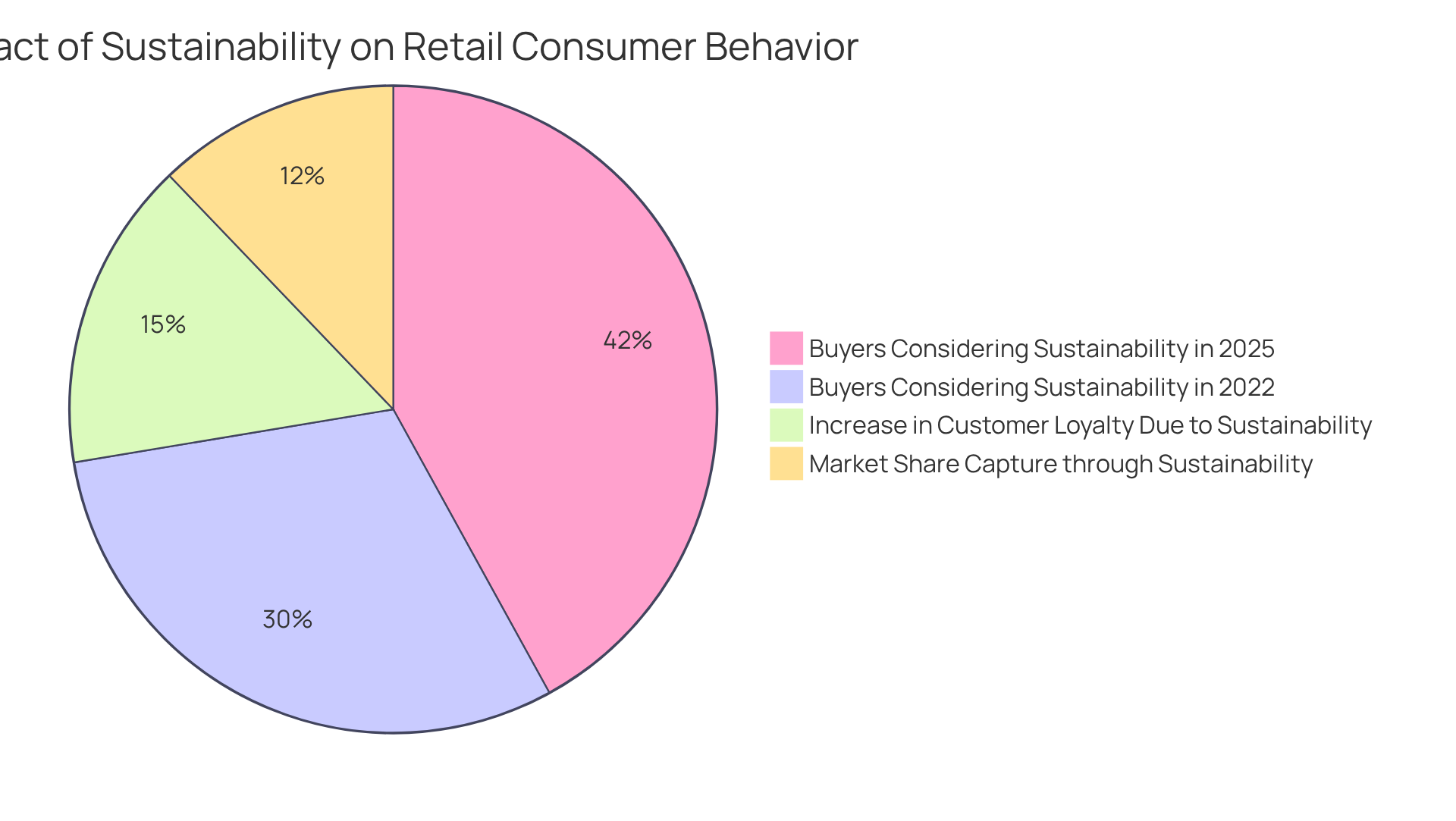
Technology Integration: Enhancing Retail Experiences
The integration of technology in commerce is revolutionizing the shopping experience. With AI-driven personalization and augmented reality (AR) applications, retailers are harnessing technology to craft immersive environments that captivate customers. Intelligent fitting rooms, engaging displays, and mobile payment options exemplify how technology enhances the retail landscape, rendering shopping more convenient and enjoyable for consumers. This evolution not only streamlines the purchasing process but also enriches customer engagement, ultimately reshaping consumer expectations in the marketplace.
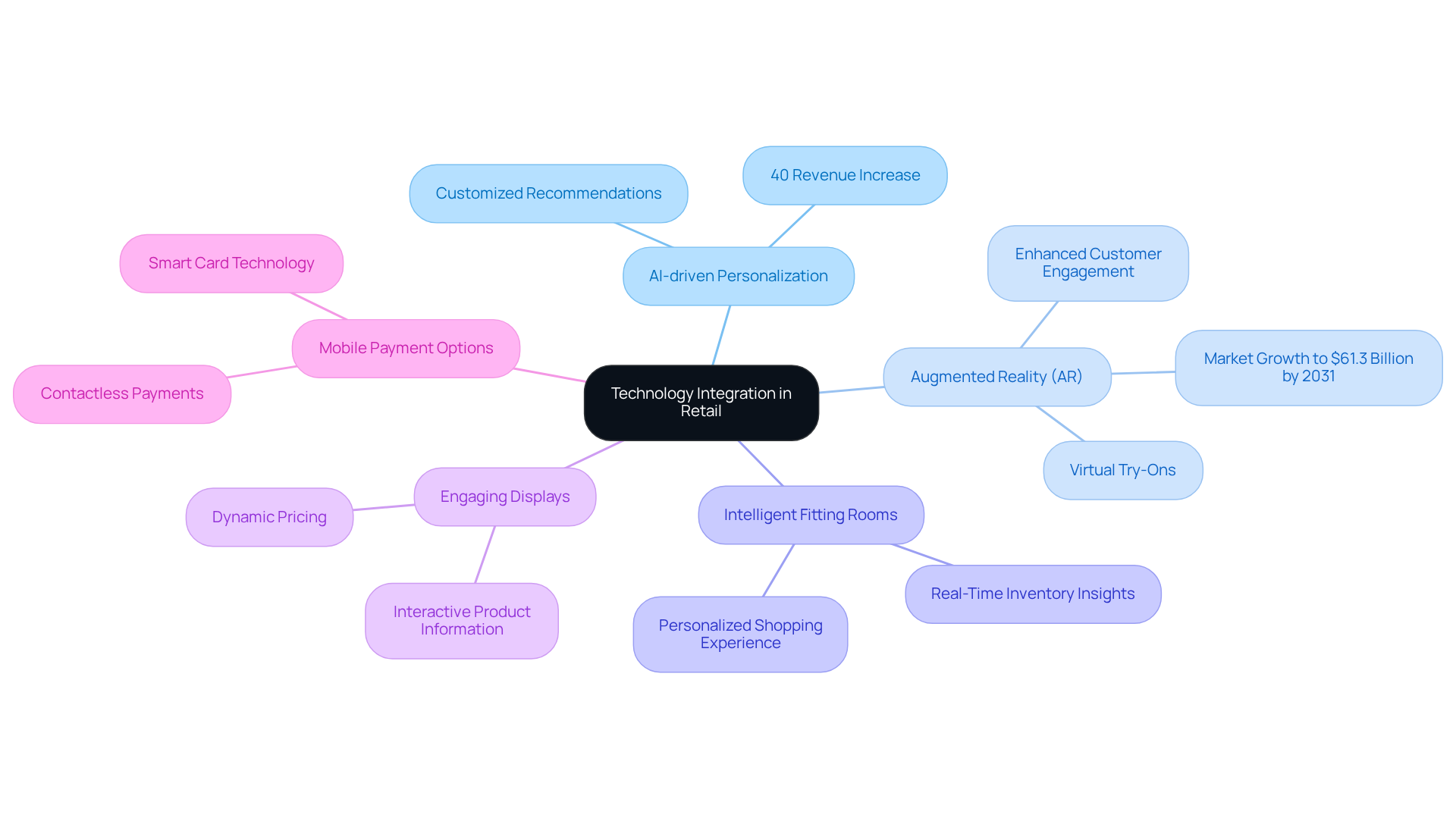
Mixed-Use Developments: Creating Community-Centric Retail Environments
Mixed-use developments are rapidly gaining traction as they seamlessly integrate residential, commercial, and recreational spaces. These environments not only promote community involvement but also provide unmatched convenience for individuals, enabling them to access shopping, dining, and entertainment in a single location. Retailers situated within these developments benefit from a built-in customer base, significantly enhancing foot traffic and sales potential.
This trend underscores a wider shift towards community-focused shopping environments that prioritize user experience, reflecting current retail real estate trends, with studies suggesting that such areas can boost foot traffic by as much as 30%.
Effective instances of community-focused designs demonstrate that when shopping centers and commercial areas align with retail real estate trends and address the unique requirements of their local populations, they flourish, forming vibrant hubs that connect with shoppers and foster ongoing involvement.
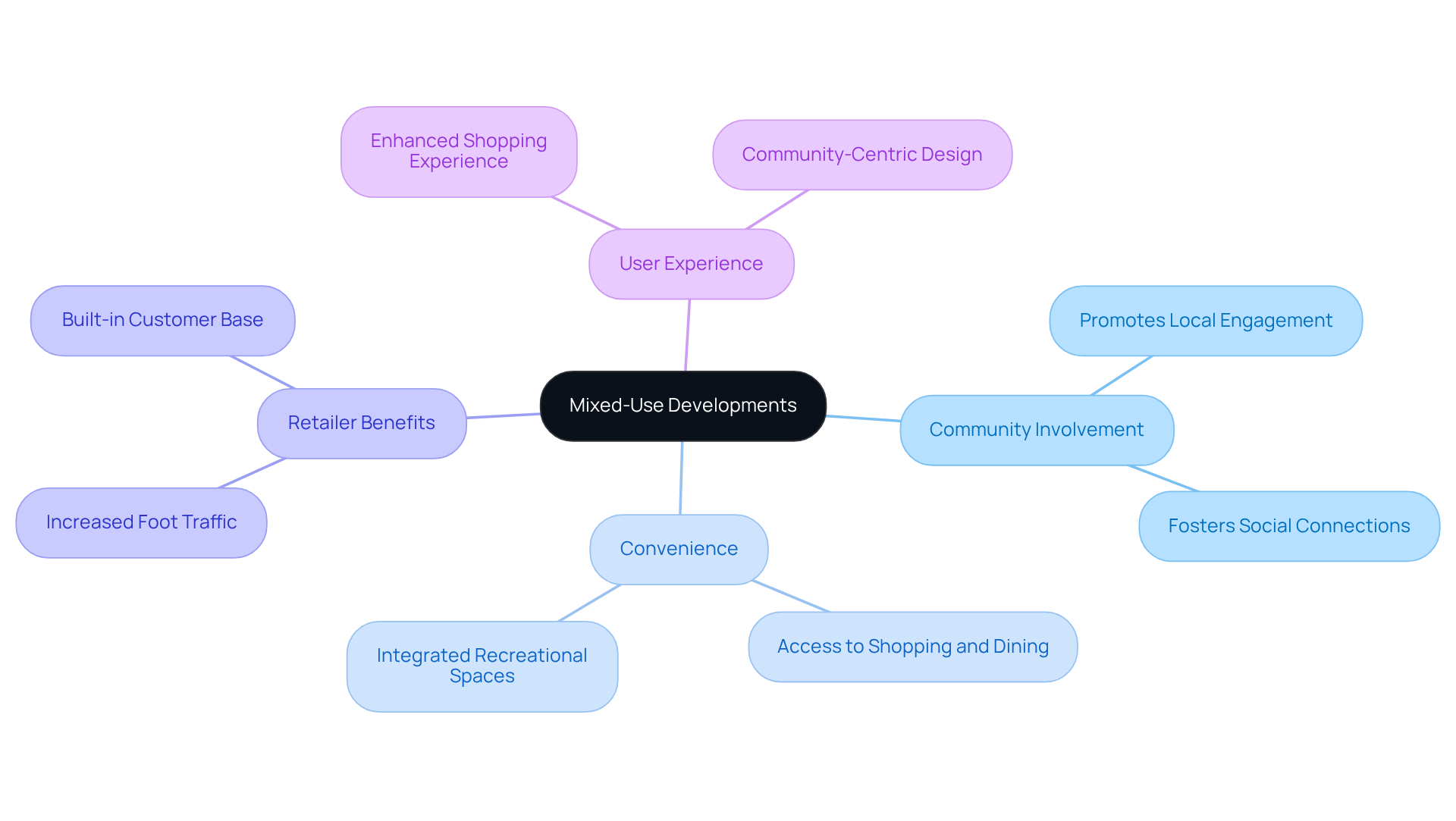
Experiential Retail: Fostering Engaging Shopping Environments
Experiential retail is transforming the shopping landscape by converting stores into immersive destinations that engage consumers. Retailers are increasingly prioritizing the creation of captivating environments that encourage individuals to interact with products and brands in meaningful ways. This trend encompasses a variety of strategies, including:
- Hosting events
- Offering workshops
- Leveraging technology to enhance the shopping experience
Brands like Glossier and Nike exemplify this movement, having successfully established photogenic stores that promote social sharing, effectively turning patrons into brand ambassadors.
The impact of these immersive shopping experiences on consumer behavior is substantial. Research indicates that well-trained employees can boost client loyalty by up to 233%, while businesses investing in client experience often observe significant returns. Furthermore, 80% of customers are more likely to engage with a company that offers personalized experiences, underscoring the necessity of creating engaging environments. As we approach 2025, the focus on retail real estate trends that emphasize delivering adaptive, hyper-personalized experiences is not merely a trend but a critical strategy for driving sales and fostering brand loyalty. Retailers that embrace retail real estate trends are poised to thrive, as they cultivate deeper connections with shoppers through innovative and interactive shopping environments. Additionally, 69% of US shoppers prefer brands that provide a consistent experience online and in-store, highlighting the importance of a unified shopping journey. To capitalize on these trends, businesses should prioritize employee training to enhance customer experience and engagement.
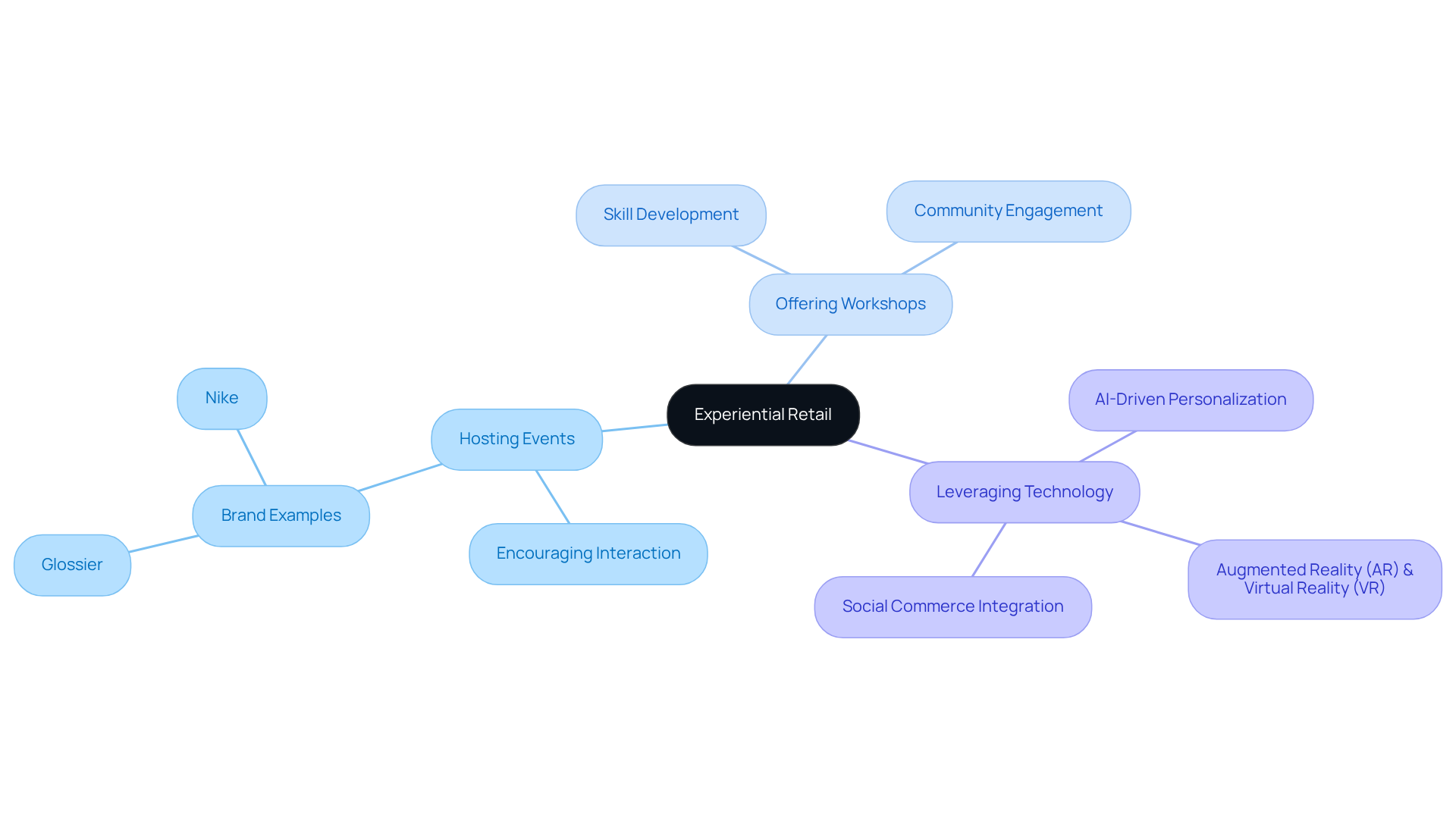
Remote Work Trends: Redefining Retail Location Strategies
The rise of remote work is profoundly reshaping retail real estate trends, as more consumers opt for suburban living. With nearly 25% of remote workers expected to permanently relocate to suburban areas by 2025, businesses are recognizing the untapped potential of these markets. This trend is driving demand for local shopping options, compelling businesses to establish a presence in communities that cater to the convenience and accessibility needs of remote workers, which aligns with current retail real estate trends.
Statistics reveal that by 2025, over 70% of shoppers are projected to shop online more frequently than before the pandemic, further prompting retailers to adapt their strategies in response to retail real estate trends. Successful suburban commercial developments, such as the emergence of satellite shopping centers, exemplify retail real estate trends by showing how businesses can thrive by aligning their offerings with the preferences of remote workers.
As Osamu Kikuchi aptly states, "Businesses need to adapt to the new consumer behaviors driven by remote work, including increased e-commerce and demand for local shopping options." Vendors that embrace these changes can better meet customer needs and capitalize on the expanding opportunities in suburban markets, ultimately enhancing their competitive advantage by aligning with retail real estate trends in this evolving landscape.
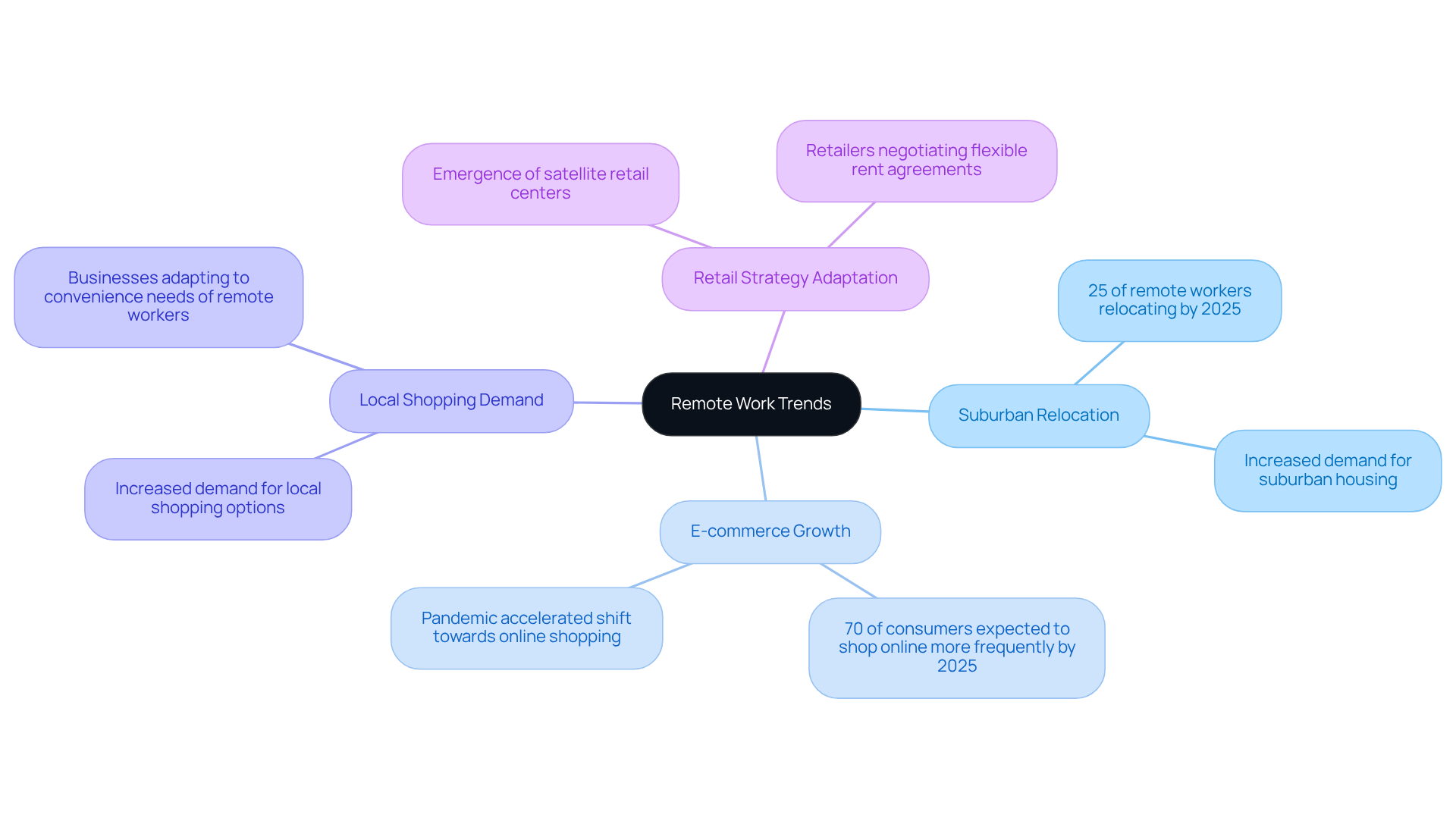
Urbanization Effects: Shaping Retail Locations
Urbanization is fundamentally transforming commercial environments as cities become increasingly populated. This change significantly heightens the demand for commercial areas in city centers, where shoppers prioritize convenience and accessibility. Retailers are strategically responding by launching flagship stores in high-traffic areas, aligning with the urban consumer's need for immediate access to products and services.
Successful flagship stores have emerged in bustling urban locales, showcasing innovative designs and experiential offerings that attract foot traffic and enhance brand visibility. As urbanization progresses, understanding retail real estate trends and their impacts on commercial sites is crucial for businesses aiming to thrive in competitive urban settings.
Statistics indicate that by 2025, urban shopping demand is anticipated to rise significantly, underscoring the necessity for businesses to adjust their strategies to accommodate the evolving preferences of city residents.
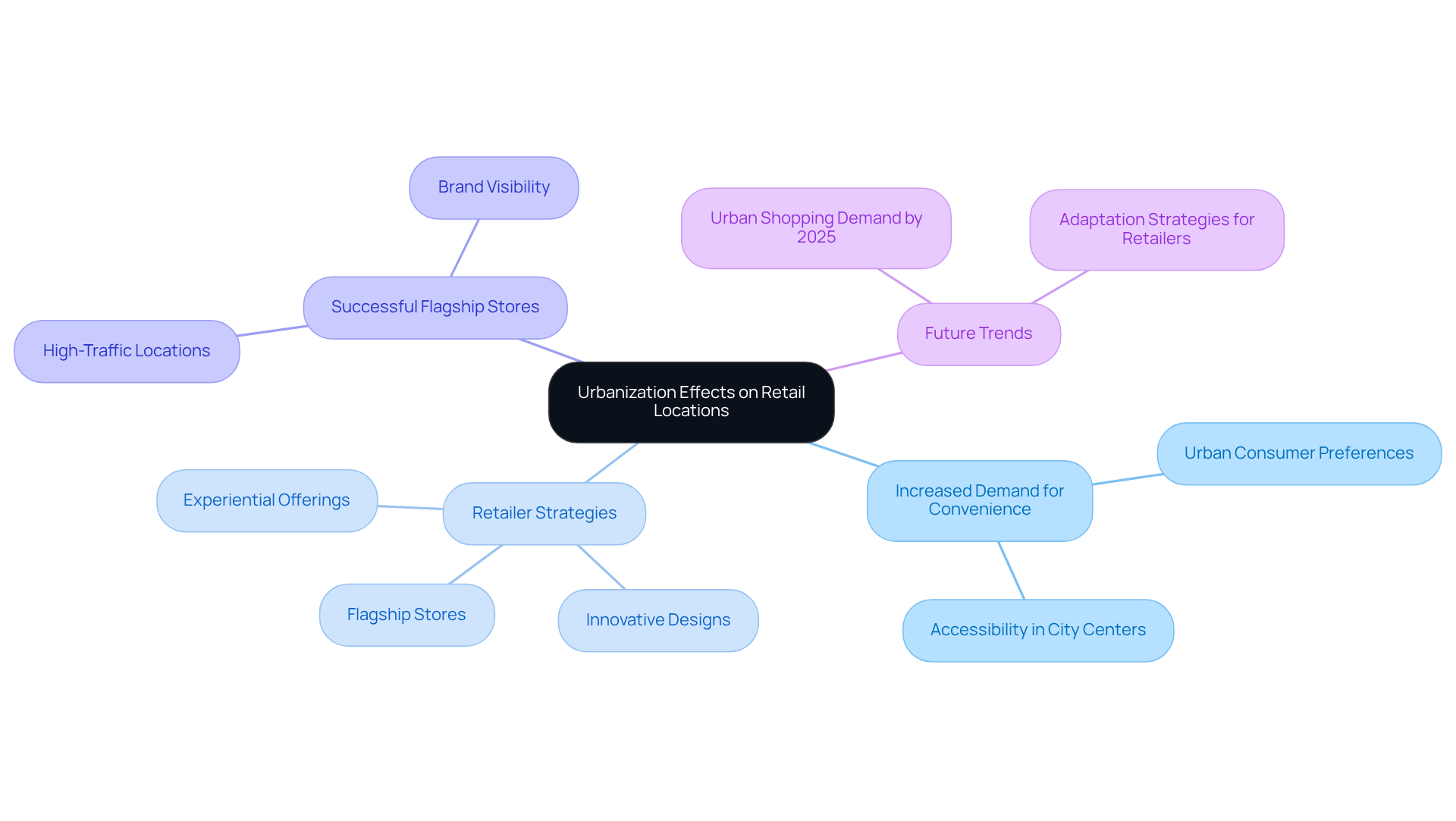
Demographic Shifts: Adapting to Changing Consumer Profiles
Demographic changes are significantly impacting marketing strategies as buyer profiles evolve. Retailers must adapt to shifting preferences across diverse age groups, income levels, and cultural backgrounds. For example, by 2025, over 60 million individuals will be aged 65 and older—a demographic often overlooked by retailers despite their substantial purchasing power. Furthermore, 53% of Gen Z shoppers still prefer traditional shopping experiences, indicating that a blend of digital and physical selling strategies is essential. Notably, 80% of all shopping still occurs in-store, highlighting the necessity of maintaining physical retail alongside digital initiatives.
Retailers who comprehend these shifts can customize their offerings and marketing strategies to resonate with various consumer segments. This adaptability is vital for sustaining relevance and competitiveness in a rapidly evolving market, especially as nearly half of surveyed executives intend to invest in physical store remodels or new locations in 2025, in line with current retail real estate trends. Embracing these demographic changes not only enhances consumer interaction but also positions sellers for success in an increasingly complex environment.
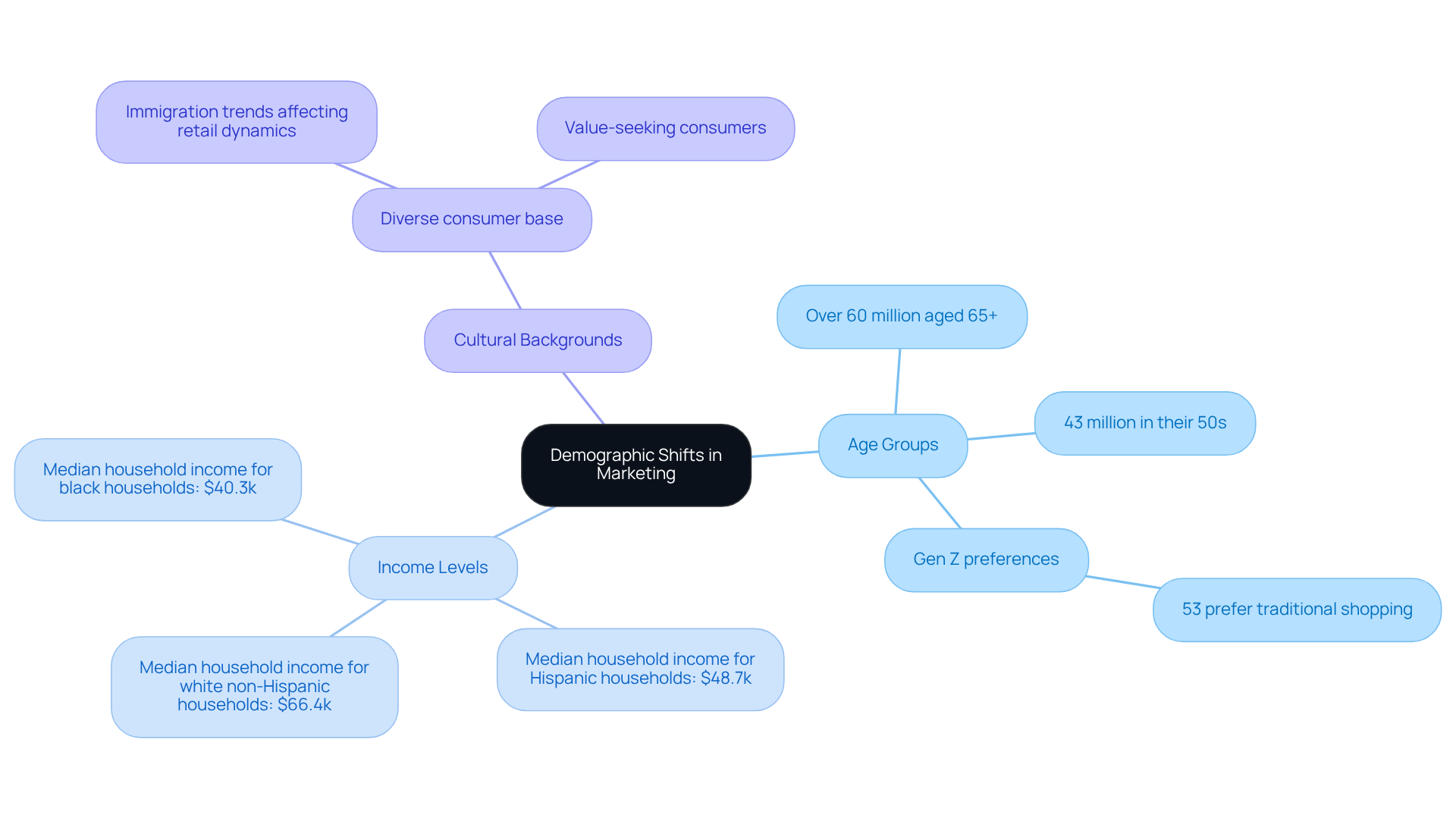
Competitive Landscape: Innovating for Market Differentiation
The competitive landscape in retail real estate trends is intensifying, which compels businesses to innovate continuously. To set themselves apart, retailers are exploring unique product offerings, personalized services, and enhanced customer experiences. This innovation is essential for attracting and retaining clients in a market where consumer expectations are in constant flux. Retailers that embrace change and prioritize innovation will be strategically positioned for future success.
For instance, Roberto Lopez, VP Operations at Cannabis4Less, underscores the importance of efficiency and service, stating, "What is important to us is the ability to be efficient, especially with the POS system." This statement highlights how leveraging technology can enhance customer engagement.
Moreover, the success of Cannabis4Less in Clairmont, Alberta, illustrates effective differentiation strategies, as they adapted their business model based on customer feedback and retail real estate trends. Their discount model has established them as the preferred store in the area, showcasing the significant impact of understanding demographics on retail success.
Additionally, Cannabis4Less's email marketing campaign achieved an impressive open rate exceeding 30 percent, demonstrating the effectiveness of innovative strategies in engaging customers.
Looking ahead to 2025, the focus on innovation in retail real estate trends will not only shape product development but also redefine customer interactions, ensuring that those who prioritize these elements will lead the market.
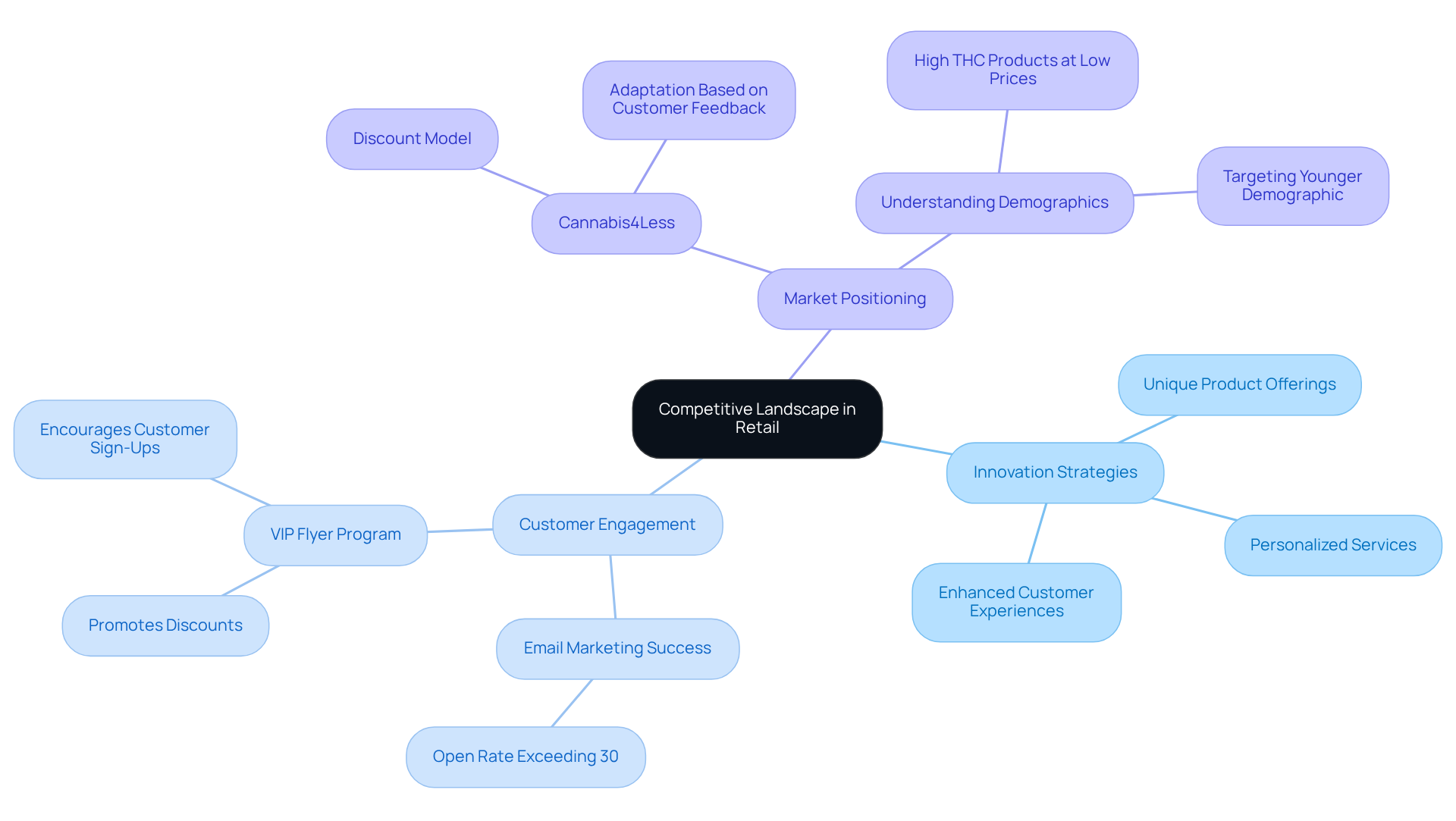
Conclusion
The landscape of retail real estate is undergoing a transformative shift, driven by several pivotal trends reshaping how consumers shop and interact with brands. As e-commerce expands, retailers must integrate online and offline experiences, emphasizing the importance of omnichannel strategies. This evolution transcends mere survival; it signifies a fundamental change in how businesses engage with their customers, fostering loyalty and enhancing satisfaction.
Key insights from the trends reveal a strong focus on sustainability, technology integration, and community-centric developments. Retailers increasingly adopt eco-friendly practices to meet the growing demand for transparency and responsibility from consumers. Moreover, technology enhances the shopping experience through personalized interactions and immersive environments, while mixed-use developments create vibrant spaces that foster community engagement. The implications of demographic shifts and the rise of remote work further underscore the necessity for retailers to adapt their strategies to remain relevant in an ever-evolving market.
As these trends unfold, it is crucial for retailers to embrace innovation and adaptability. By aligning their strategies with the changing preferences and behaviors of consumers, businesses can not only thrive in today's competitive landscape but also set the stage for future success. The future of shopping is not merely about transactions; it revolves around creating meaningful experiences that resonate with consumers on multiple levels. Retailers are encouraged to stay informed and proactive in implementing these trends, ensuring they are well-positioned to meet the demands of tomorrow's marketplace.




